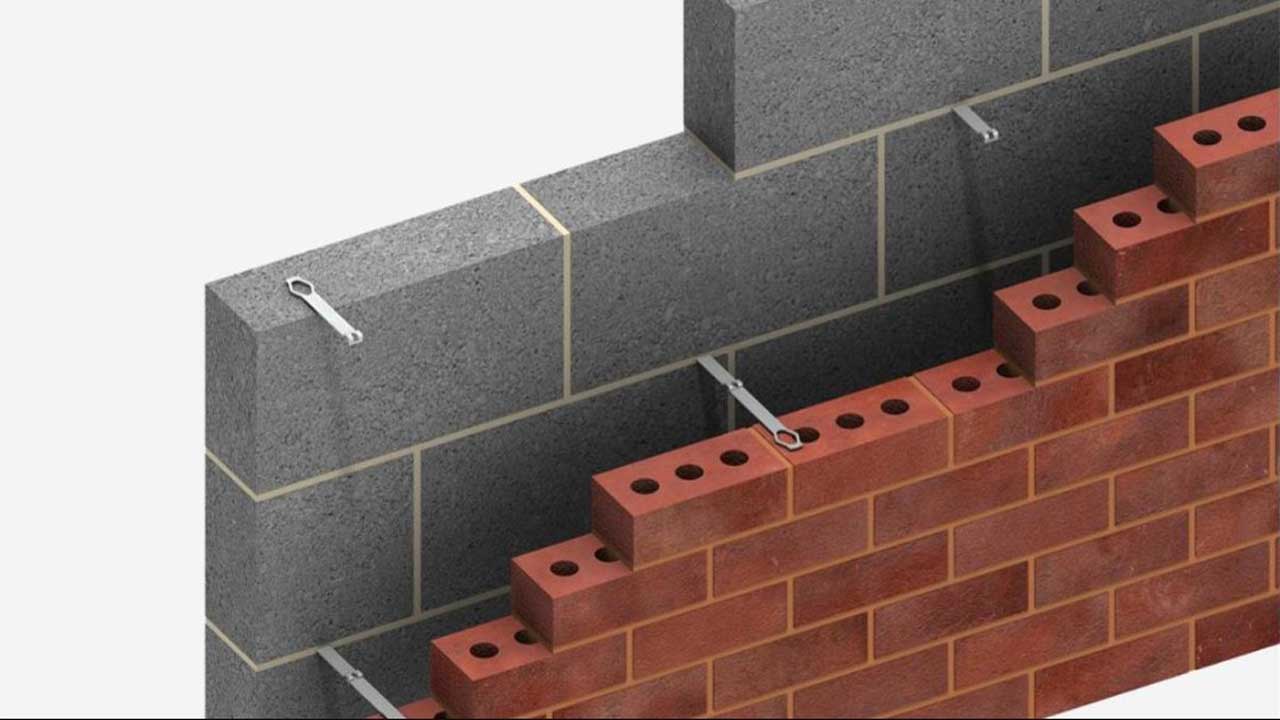
Cavity Wall Construction its Advantages, Disadvantages.
For cavity walls, as illustrated in Figure 1, the cavity typically ranges from a minimum of 2 in. to a maximum of 4 ½ in. (25 to 114 mm) wide, with a minimum of a 1 in. (25 mm) clear airspace if rigid insulation is placed in the cavity.. cavity filter cavity walls construction details corner flashing end dams flashing moisture parapet.

cavitywallcrosssection
Cavity trays should be provided: At all interruptions of the cavity, such as lintels and sleeved vents and ducts. Above cavity insulation that stops short of the. Cavity trays should rise at least 140mm within the cavity, be self-supporting or fully supported with joints lapped and sealed. Stop ends should be provided to the ends of all cavity.

Pin on CONSTRUCTION
Framing What Is a Cavity Wall? Jan 31, 2022 From the outside, most brick, block, or stone structure walls look like one solid piece of construction. However, hiding inside those walls is often a gap, stretching the entire length and height of the wall. This gap isn't an error in the wall's construction or an oversight.

Pin on Home Decorating
Courtesy of Detail Library. There are so many options and considerations when detailing a window. The Detail Library features over 350 construction details to download in 2D CAD and Revit and 3D.
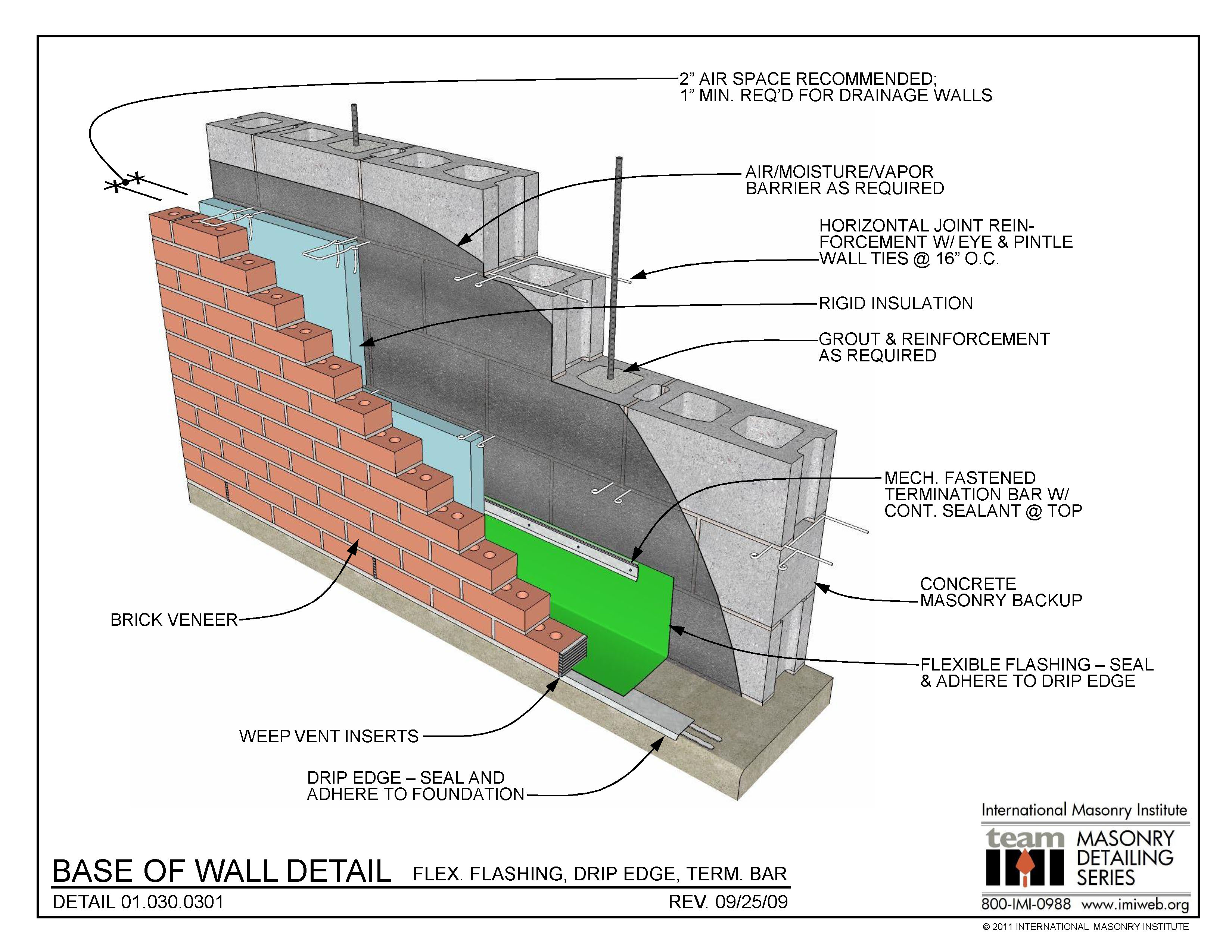
01.030.0301 Base of Wall Detail Flexible Flashing, Drip Edge, Term Bar International
The cavity may lead right up to the top of the parapet and be converted by copying and D.P.C. It may be stopped levels, but D.P.C. must be laid over the cavity. Constructional Details of Cavity Wall. The cavity walls have two leaves, inner and outer, with hollows spaces in between them. The width of the cavity varies from 50 mm to 75 mm.

Weathertightness and brick veneer cavities BRANZ Build Brick veneer, Window construction, Brick
A masonry veneer with masonry backup and an air space between the masonry wythes is commonly referred to as a cavity wall. The continuous air space, or cavity, provides the wall with excellent resistance to moisture penetration and wind driven rain as well as a convenient location for insulation.

Wider Cavity Walls the Norm Today Masonry Magazine
What Is a Cavity Wall? A cavity wall consists of a hollow space between them. The cavity walls normally consist of two skins, which should be brick, cinder blocks, or reinforcement concrete blocks, etc. The absorbent materials are used in cavity wall construction to that draw out the rainwater and consist of humidity in the wall.
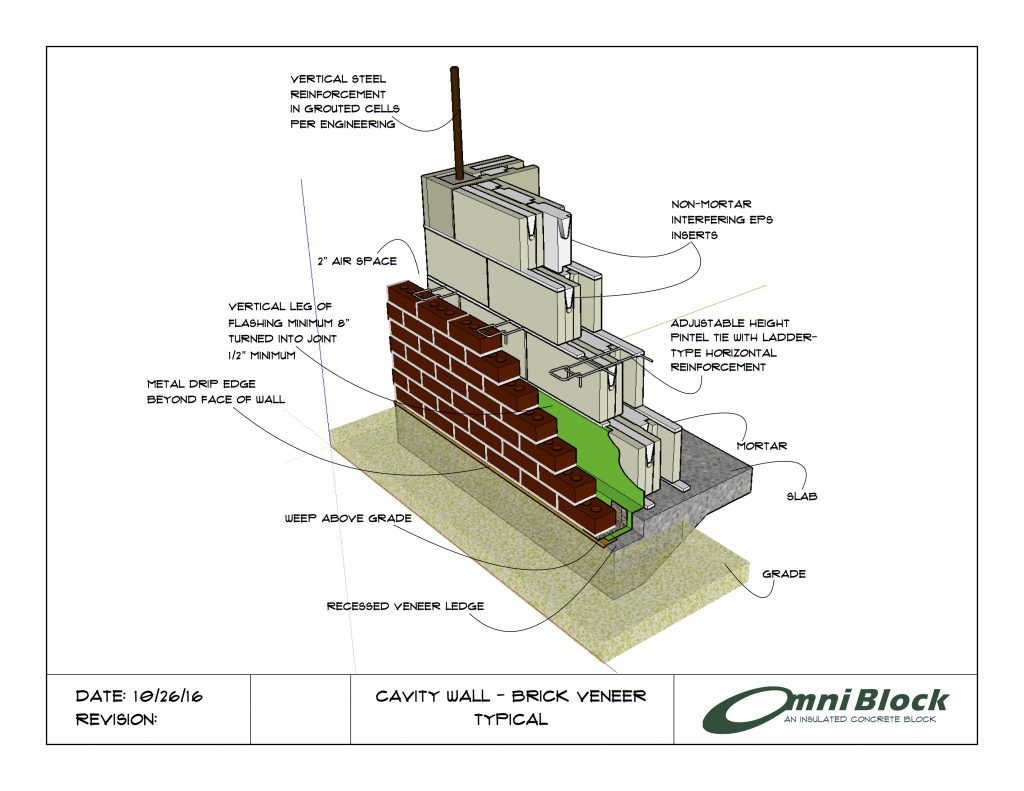
Cavity Wall Brick Veneer Omniblock
Important Point A cavity wall consists of a hollow space between them. The cavity walls normally consist of two skins, which should be brick, cinder blocks, or reinforcement concrete blocks, etc. The absorbent materials are used in cavity wall construction to that draw out the rainwater and consist of humidity in the wall.
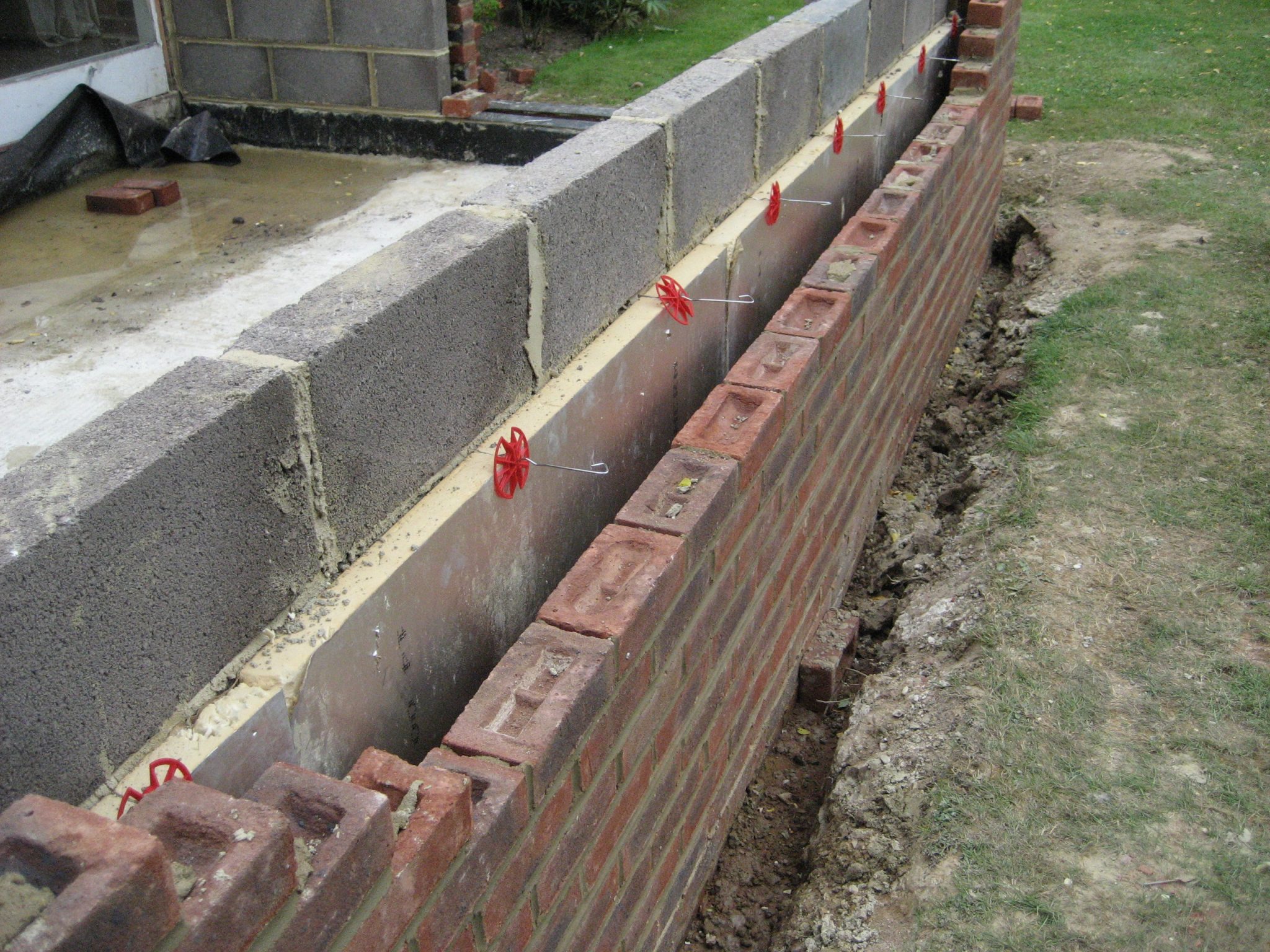
Cavity Wall Its Purpose, Advantages And Disadvantages Engineering Discoveries
Simply stated, a cavity wall is two wythes of masonry, separated by a cavity of varying dimension. The mason-ry wythes may consist of solid brick, structural clay tile, or concrete masonry units and are bonded together with masonry ties. The cavity (ranging from 2 inches to 4 1/2 inches in width) may or may not contain insulation. See Figure 1.

CAVITY WALL CONSTRUCTION
To visualize, imagine two brick or block walls built closely together but never touching. The space that separates them is the 'cavity.' This cavity can be left as an air gap or filled with insulating materials, depending on the design's objective.
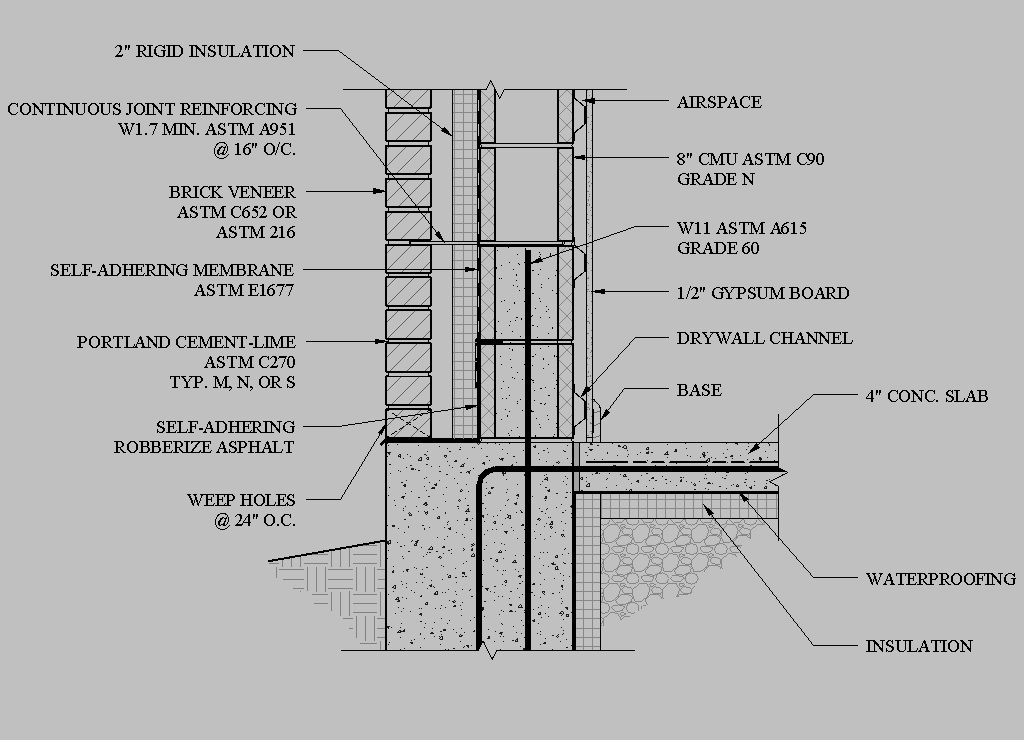
Brick Wall Detail Drawing / This tutorial uses exact measurements and requires the use of a
Cavity Wall Details. Cavity walls can vary in complexity, and their specific details may differ based on construction requirements and design specifications. However, some common cavity wall details include: 1. Wall Ties. Wall ties are crucial components of cavity wall construction. They connect the inner and outer leaves, providing stability.

01.040.0311 Base of Wall Detail Brick Ledge, T/ Foundation Below Grade International
Use as a Thermal Insulation There should be a medium to heat to transfer. Creating an air gap reduces and the air gap acts as an insulation. Especially, when we need to maintain the heat, need to avoid heat transfer, etc. we could construct cavity walls as appropriately. Use to Prevent Dampness

01.030.0322 Base of Wall Detail Brick Ledge, T/FDTN. Below Grade International Masonry
History Cavity wall construction was introduced in the United Kingdom [3] during the 19th century and gained widespread use in the 1920s. In some early examples, stones were used to tie the two skins together, [4] while in the 20th century metal ties came into use.
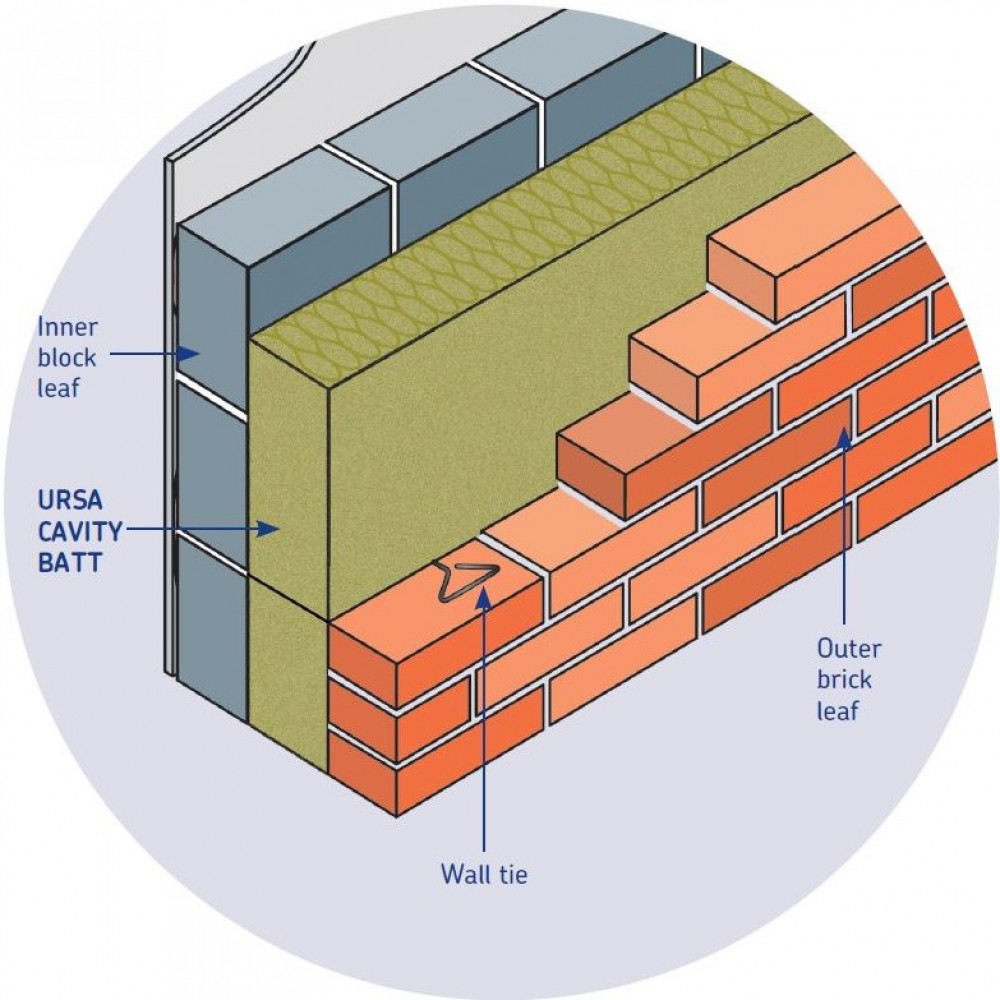
Masonry Cavity Walls
Passivhaus Cavity Wall Details Understanding Passivhaus explores a number of different construction methods that can be used to build a Passivhaus. There is a common misconception that a Passivhaus must be a timber frame construction.

Cavity Wall Advantages and Disadvantages Civil Snapshot
Construction details of Cavity Wall. To construct a cavity wall, there is no need to provide a foundation. A strong concrete base is sufficient to construct a cavity wall. Two walls are constructed like normal masonry. There must be a minimum cavity space between the two walls. This cavity can be filled with concrete with some slope at the top.

Cavity Wall Purpose, Advantages And Construction Process
Detailing Series. IMI's Detailing Series is a collection of illustrative construction details and diagrams for architects and engineers to use as a design resource. Find new construction details for brick, CMU, stone, ceramic tile, terrazzo, plaster/stucco, rainscreens, terra cotta, and AAC, along with a collection of masonry restoration details.